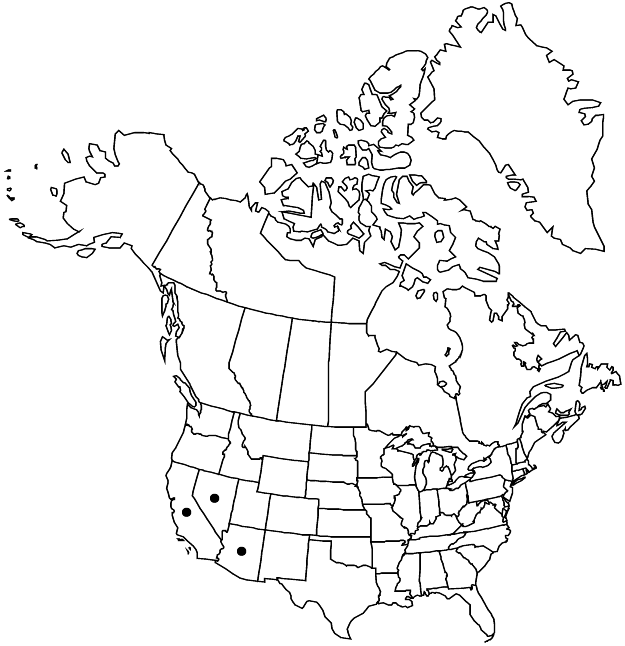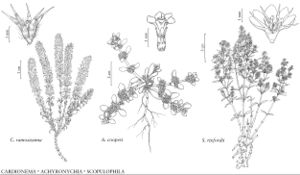Difference between revisions of "Scopulophila rixfordii"
Bull. Torrey Bot. Club 49: 351. 1923.
Common names: Rixford’s rockwort
IllustratedEndemic
Basionym: Achyronychia rixfordii Brandegee Zoë 1: 230. 1890
Treatment appears in FNA Volume 5. Treatment on page 48.
FNA>Volume Importer |
imported>Volume Importer |
||
| (4 intermediate revisions by one other user not shown) | |||
| Line 8: | Line 8: | ||
}} | }} | ||
|common_names=Rixford’s rockwort | |common_names=Rixford’s rockwort | ||
| − | |basionyms={{Treatment/ID/ | + | |special_status={{Treatment/ID/Special_status |
| + | |code=F | ||
| + | |label=Illustrated | ||
| + | }}{{Treatment/ID/Special_status | ||
| + | |code=E | ||
| + | |label=Endemic | ||
| + | }} | ||
| + | |basionyms={{Treatment/ID/Basionym | ||
|name=Achyronychia rixfordii | |name=Achyronychia rixfordii | ||
|authority=Brandegee | |authority=Brandegee | ||
| + | |rank=species | ||
| + | |publication_title=Zoë | ||
| + | |publication_place=1: 230. 1890 | ||
}} | }} | ||
|synonyms= | |synonyms= | ||
| Line 35: | Line 45: | ||
-->{{#Taxon: | -->{{#Taxon: | ||
name=Scopulophila rixfordii | name=Scopulophila rixfordii | ||
| − | |||
|authority=(Brandegee) Munz & I. M. Johnston | |authority=(Brandegee) Munz & I. M. Johnston | ||
|rank=species | |rank=species | ||
| Line 49: | Line 58: | ||
|publication title=Bull. Torrey Bot. Club | |publication title=Bull. Torrey Bot. Club | ||
|publication year=1923 | |publication year=1923 | ||
| − | |special status= | + | |special status=Illustrated;Endemic |
| − | |source xml=https:// | + | |source xml=https://bitbucket.org/aafc-mbb/fna-data-curation/src/2e0870ddd59836b60bcf96646a41e87ea5a5943a/coarse_grained_fna_xml/V5/V5_95.xml |
|subfamily=Caryophyllaceae subfam. Paronychioideae | |subfamily=Caryophyllaceae subfam. Paronychioideae | ||
|genus=Scopulophila | |genus=Scopulophila | ||
Latest revision as of 22:15, 5 November 2020
Stems 10–30 cm, glabrous except densely woolly at base. Leaves: stipules 0.8–3.5 mm; leaf pairs equal; blade 8–25 mm, fleshy. Inflorescences 2–4-flowered. Flowers: perianth 2.2–4.2 mm; hypanthium green, becoming brown and hard, terete to angular; sepals erect to spreading, central portion green, linear to oblong, concave, often unequal, fleshy, scarious portion becoming deciduous with age; staminodes slightly longer than sepals. Utricles ovoid. Seeds 0.9–1.1 mm.
Phenology: Flowering spring–early summer.
Habitat: Limestone and quartzite outcrops
Elevation: 1200-1600 m
Distribution

Ariz., Calif., Nev.
Discussion
Selected References
None.
Lower Taxa
None.
